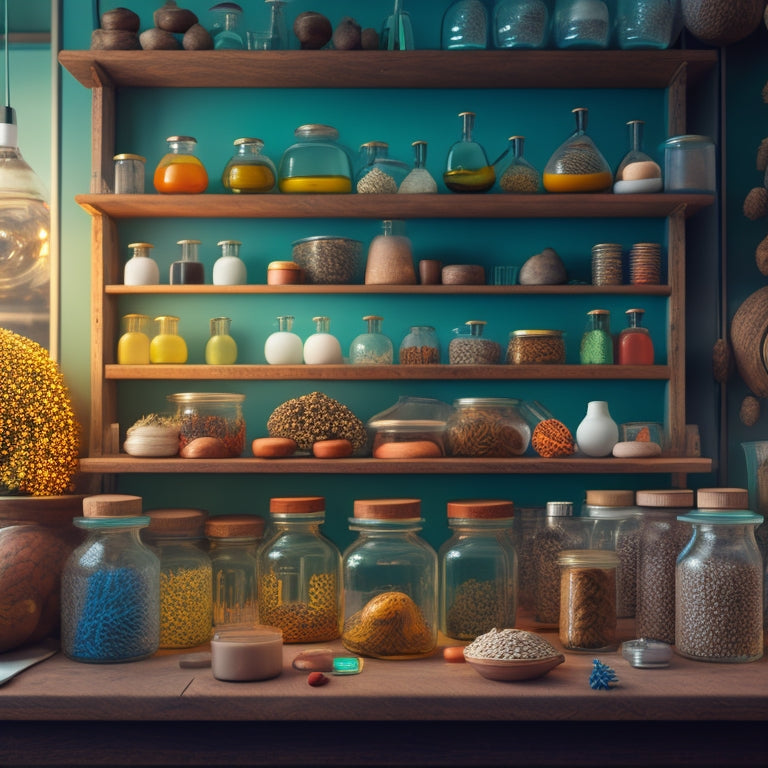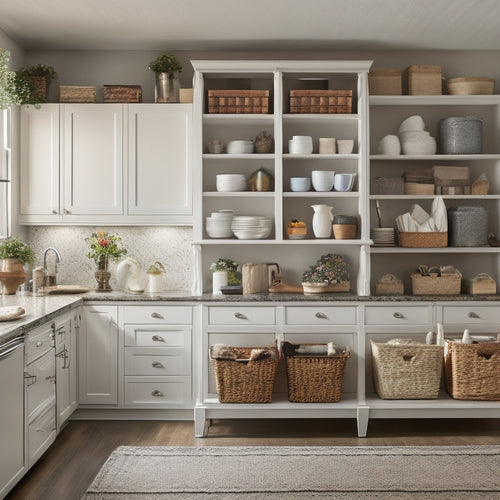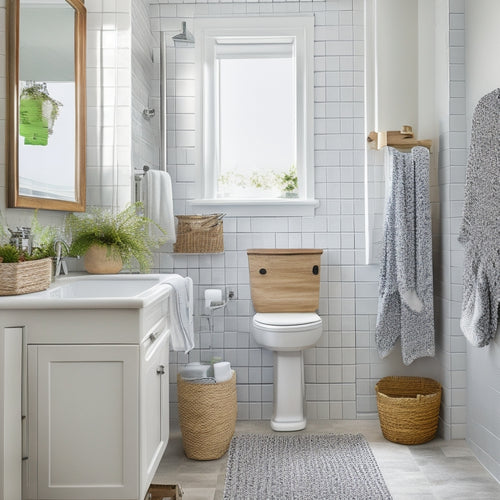
DIY Fungal Storage Solutions & Research Support
Share
Effective DIY fungal storage solutions are essential for maintaining specimen quality, particularly during temporary storage periods. Ideal storage conditions are often not immediately available, leaving dried fungi vulnerable to moisture absorption and DNA degradation. By prioritizing moisture control and organization, individuals can create a-home fungarium using cost-effective materials like weatherproof plastic containers, silica gel beads, and DampRid. Implementing these solutions guarantees the integrity of fungal specimens, ultimately supporting research initiatives. Discover how to navigate the intricacies of DIY fungal storage and contribute to the advancement of fungal research by exploring these innovative solutions further.
Key Takeaways
• Effective DIY fungarium solutions involve using airtight containers, desiccants like silica gel beads or DampRid, and humidity monitoring.
• DIY fungarium systems provide cost-effective storage for fungal specimens, ensuring DNA sample integrity and long-term viability.
• To support fungal research efforts, individuals can donate to organizations like the Fungal Diversity Survey or participate in citizen science projects.
• Building a home fungarium requires moisture control, categorization by species and date, and storage in a cool, dry place.
• Reheating or replacing desiccants regularly is crucial to maintaining a dry environment and preventing DNA degradation.
Temporary Storage Challenges
Idealized fungarium storage is often thwarted by the reality of temporary storage challenges, where specimens sequenced through FunDiS projects are not immediately sent to a curated fungarium, leaving researchers to contend with the vulnerability of dried fungi to moisture absorption and subsequent DNA degradation.
This temporary limbo can be challenging, especially when considering the months that may pass before the next fungarium shipment. It's important to prioritize moisture control and specimen organization during this time.
Maintaining Specimen Quality
To guarantee the long-term viability of fungal specimens, maintaining a precise balance of environmental conditions is essential, as even slight fluctuations in humidity can compromise the integrity of DNA samples.
This delicate balance is vital for DNA preservation, as moisture can quickly degrade the genetic material. To achieve the best storage conditions, consider the following:
-
Desiccant management: Use desiccants to absorb excess moisture, and reheat or replace them regularly to maintain their effectiveness.
-
Humidity monitoring: Keep a close eye on humidity levels, and adjust storage conditions accordingly to prevent moisture buildup.
-
Airtight containers: Store specimens in airtight containers to prevent moisture from entering and compromising the DNA samples.
DIY Fungarium Solutions
By implementing effective desiccant management, humidity monitoring, and airtight containers, individuals can establish a reliable DIY fungarium system, allowing them to store and preserve fungal specimens in a controlled environment.
Container options range from 6-latch weatherproof plastic containers to 5-gallon plastic buckets, providing flexibility for unique storage needs.
Moisture control is essential, and desiccants like silica gel beads or DampRid can be used to absorb excess humidity. By reheating or replacing desiccants as needed, specimen quality can be maintained.
With a little creativity and attention to detail, DIY fungarium systems can provide a cost-effective solution for storing and preserving valuable fungal specimens. Whether for personal study or future research, these systems offer an exciting opportunity to contribute to the fascinating world of mycology.
Supporting Fungal Research Efforts
Contributing to the advancement of mycological knowledge, individuals can play an essential role in supporting fungal research efforts through collaborative partnerships, donations, and active engagement with organizations dedicated to the study and preservation of the fungal kingdom. By doing so, they can help address the urgent need for research funding, which is vital for driving innovation and discovery in the field.
Here are three ways to make a meaningful impact:
-
Donate to reputable organizations, such as the Fungal Diversity Survey, to support research initiatives and community engagement projects.
-
Participate in citizen science projects, which enable individuals to contribute to research efforts and gain hands-on experience in the field.
-
Stay informed and spread awareness about the importance of fungal research and its applications in fields like medicine, ecology, and agriculture.
Building a Home Fungarium
For individuals keen to contribute to fungal research efforts, establishing a home fungarium provides an opportunity to collect, store, and study fungal specimens, ultimately advancing mycological knowledge and preserving the fungal kingdom.
When building a home fungarium, consider container options that guarantee moisture control, such as 6-latch weatherproof plastic containers or 5-gallon plastic buckets. Silica gel beads and DampRid are effective solutions for maintaining a dry environment. To keep costs down, repurpose containers and utilize cost-effective materials.
Organization tips include categorizing specimens by species and date, and storing them in a cool, dry place. By following these guidelines, enthusiasts can create a functional and efficient home fungarium, perfect for storing and studying fungal specimens while contributing to the scientific community.
Frequently Asked Questions
How Do I Handle Specimens That Require Refrigeration or Freezing?
When handling specimens that require refrigeration or freezing, it's important to maintain a reliable cold chain to prevent temperature fluctuations.
Frost protection is essential to preserving delicate fungal samples. To guarantee proper storage, use insulated containers with cold packs or dry ice, and monitor temperatures regularly.
Can I Use Homemade Desiccants Instead of Commercial Products?
When it comes to desiccation, commercial products are not the only option. Natural alternatives can be just as effective, and DIY silicas can be a vital and important solution.
For instance, uncooked rice, cat litter, or even coffee grounds can absorb moisture, making them viable homemade desiccants.
However, it's essential to guarantee their efficacy by monitoring humidity levels and replacing them regularly to prevent DNA degradation.
With a little creativity, you can create your own effective desiccation system, all while reducing waste and costs.
What Are the Ideal Storage Conditions for Specific Fungal Species?
What would be the ideal storage conditions for the prized fungal specimens, you ask?
For essential preservation, it's vital to take into account the unique needs of each species. Species profiling is key to determining the perfect humidity control, as some fungi thrive in arid environments while others require a more humid climate.
How Often Should I Inspect Stored Specimens for Signs of Degradation?
Regular fungal monitoring is essential to prevent degradation. Inspect stored specimens every 2-3 months for signs of moisture, mold, or pest infestation.
Implement a specimen tracking system to record storage conditions, desiccant replacement, and any observations. This proactive approach guarantees the integrity of your collection, allowing for swift intervention if issues arise.
Are There Any Local Regulations for Storing Fungal Specimens at Home?
When collecting rare species, mycologist Dr. Maria Rodriguez once found herself in a sticky situation, literally, when her prized specimens were confiscated due to lack of permits.
This cautionary tale highlights the importance of understanding local regulations for storing fungal specimens at home. Before setting up your DIY fungarium, research local permit requirements and zoning restrictions to avoid any, ahem, fungal fiascos.
Guarantee you're not cultivating trouble by familiarizing yourself with the laws governing specimen storage in your area.
Related Posts
-

3 Essential Tips to Boost Home Storage Capacity
You're one step away from freeing yourself from clutter chaos! To boost your home storage capacity, start by purging ...
-

10 Best Space-Saving Hacks for Tiny Guest Rooms
You're about to transform your tiny guest room into a cozy retreat that's both functional and aesthetically pleasing....
-

Bathroom Storage Hacks for Small Spaces Revealed
You're about to discover the ultimate bathroom storage hacks for your small space! Start by maximizing your vertical ...


